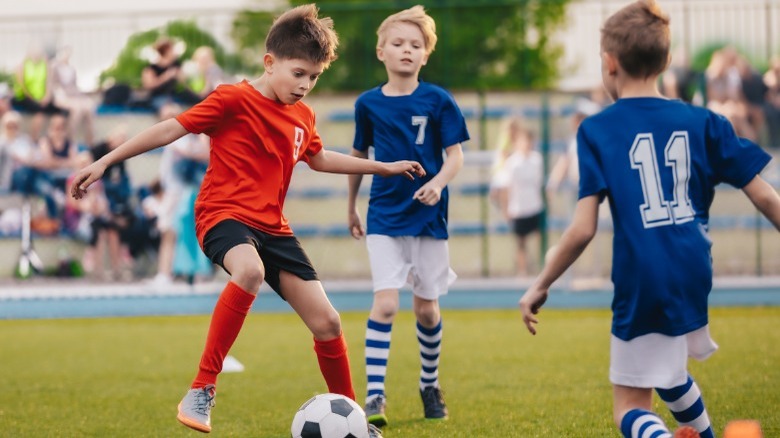How Can You Treat Growing Pains?
Ah, growing pains. We all went through some kind of transition like this back when we were children. Though the term "growing pains" may make you think of the popular television sitcom created in the 1980s following the Seaver family as their children come of age and experience the trials and tribulations of growing up, growing pains are more than day-to-day hardships: They are a real physical phenomenon, even if the causes are not yet fully understood.
The experts at the Cleveland Clinic explain that growing pains affect boys and girls between the ages of three and 12 and will most often impact the shins, calves, and thighs. Accompanied cramping or aching will usually occur at night. Even so, experts state that there is no concrete evidence that growth is actually the cause of the pain.
While there is no established treatment for growing pains, the physicians at Sparrow Health Systems suggest some home remedies that may mitigate some of your child's discomfort. For instance, they advise either a warm bath or applying a warm heating pad on a low setting to your child's sore muscles before bedtime, trying an ibuprofen pain reliever such as Children's Motrin or Advil, and having your child do doctor-approved stretches during the day. Sometimes, a simple warm cuddle will also do the trick.
How a doctor diagnoses growing pains
The term "growing pains" first appeared in 1823, when French physician Marcel Duchamp coined the phrase to explain the cause of musculoskeletal pain children experienced during physical growth, according to Joshua Burns, Professor of Allied Health (Paediatrics) at the University of Sydney. Even though there is no clear evidence linking growth to pain, the descriptive endures.
Since the causes of growing pains during childhood remain unclear, there is no single scientific test or methodology to diagnose the phenomenon. Diagnosis is made harder due to children having difficulty describing when and how the pain surfaced and articulating the nature of the pain. Even so, a doctor will typically get a sense of the origin of a child's pain by asking the child's parent or guardian where the pain is located, when the child began experiencing pain, and what the child was doing the day the pain began, according to the American Academy of Family Physicians (AAFP). For instance, if the child was engaged in excessive running and jumping or other physical activity during the day, this could lead to physical discomfort at bedtime.
Growing pains may cause a child to be fatigued during the day as a result of not having a good night's sleep due to the impact of the pain the previous night. Consequently, it's vital that parents learn ways to ensure that their children are able to return to sleep at night.
Can growing pains be a symptom of something else?
When a child experiences growing pains, the situation is not typically serious. However, it is worth paying attention to certain signs to make sure that the pain isn't related to a more severe health issue.
For instance, one health issue that your child could be experiencing is an inflammatory joint condition called juvenile idiopathic arthritis (JIA). The Hospital for Special Surgery (HSS) notes that joint damage and growth abnormalities can develop as a result of JIA, so it's important to confirm the condition early on. If your child's leg pain doesn't dissipate and there is associated swelling, fever, rash, reduced range of motion, extreme stiffness when walking, or the pain is severe enough that your child is unable to participate in their usual activities, it's time to contact your child's pediatrician.
Persistent pain could also be a sign of bone cancer. The physicians at Roswell Park Comprehensive Cancer Center explain the symptoms to look out for include pain that continues even after an injury has healed, rashes, swelling, limping or favoring one leg, sluggishness, and impaired joint movement, among others. These could be signs of osteosarcoma, a type of bone cancer that can develop in the long bones adjacent to the knee and mostly occurs in children, adolescents, and young adults (via Johns Hopkins Medicine).
If you suspect your child is experiencing more than just growing pains, your child's pediatrician can conduct a physical examination and advise on the appropriate tests and scans.



